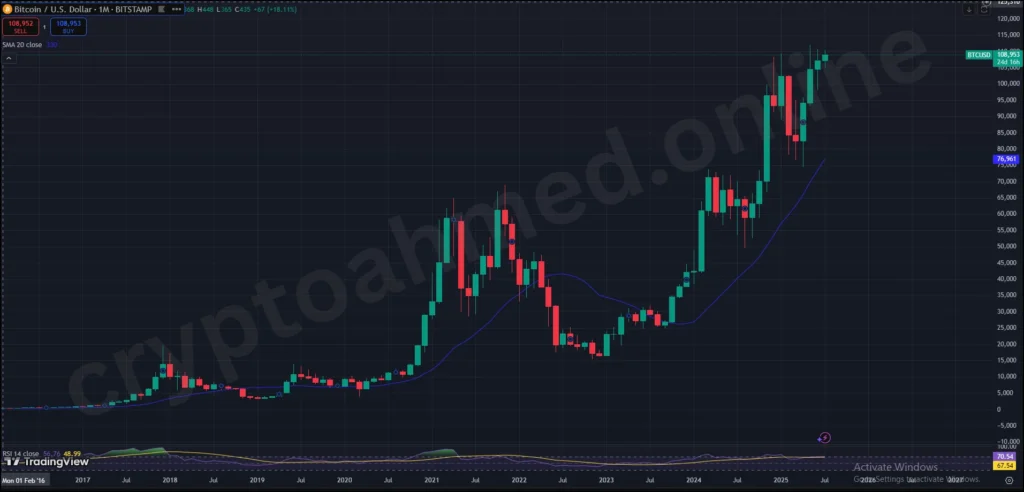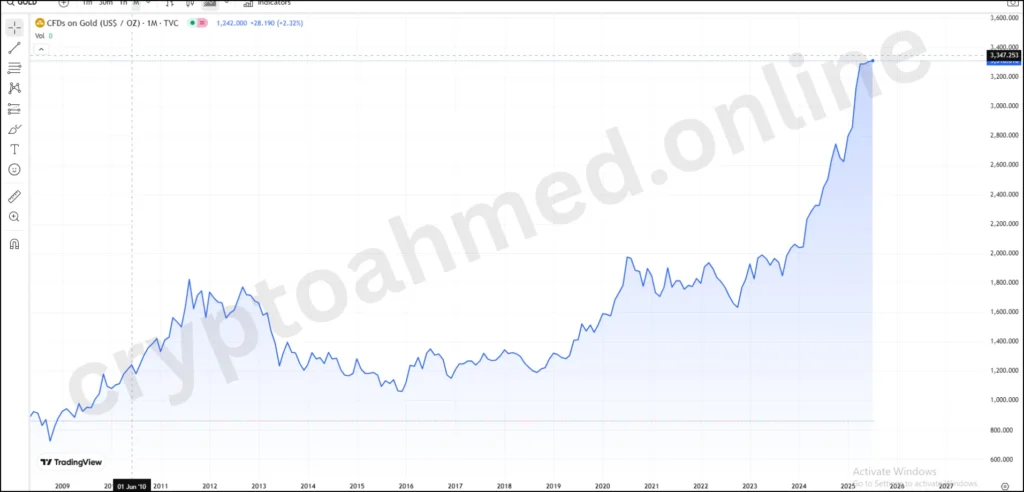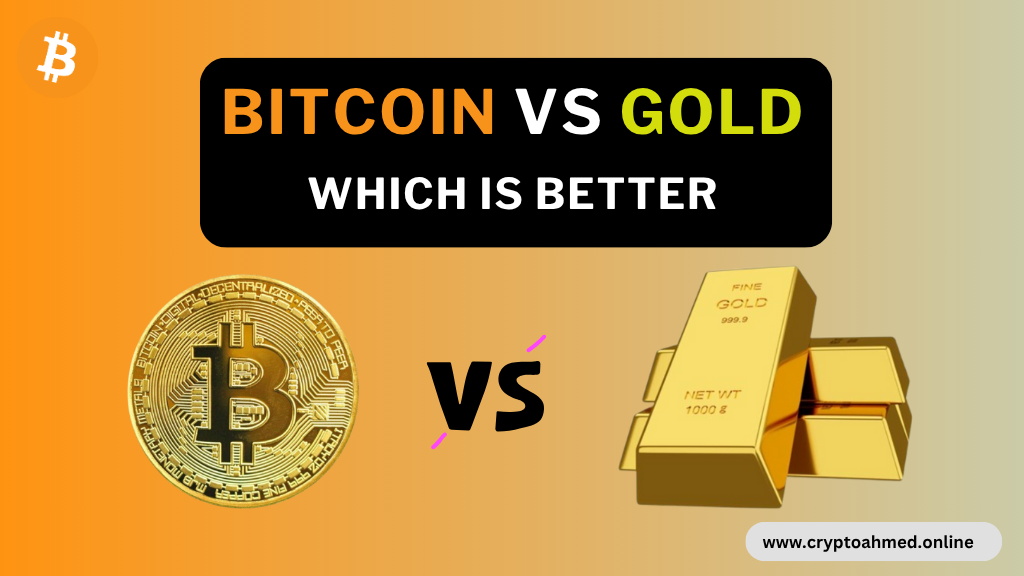As you may already know, Bitcoin has emerged as one of the most talked-about investment strategies in recent years. While some people were initially skeptical about its reliability and long-term value, the perception around Bitcoin has significantly changed, especially after the approval of Bitcoin and Ethereum ETFs. These developments have positioned cryptocurrencies not just as speculative assets but also as viable options for future investment portfolios.
However, a common question still arises among new and experienced investors alike:
Which is the better investment: traditional gold or Bitcoin, often referred to as “digital gold”? Both assets have their own strengths and serve different purposes in a diversified portfolio.
In this blog, I will provide a detailed comparison between Bitcoin and gold, exploring their benefits, risks, historical performance, and future potential, so you can make a more informed decision for your long-term investments.
Bitcoin

Bitcoin is a decentralized digital currency that allows people to send and receive money over the internet without the need for banks or intermediaries. It was created in 2009 by an unknown person or group using the name Satoshi Nakamoto. Bitcoin operates on a technology called blockchain, which is a public ledger that records all transactions securely and transparently.
Unlike traditional currencies issued by governments, Bitcoin is not controlled by any central authority. Its supply is limited to 21 million coins, making it resistant to inflation. People can buy, sell, and store Bitcoin using digital wallets, and transactions are verified by a network of computers called miners.
Bitcoin is often referred to as “digital gold” because, like gold, it is considered a store of value. It has gained popularity as an investment asset, especially after the launch of Bitcoin ETFs and growing interest from institutions worldwide.
Security
If you’re planning to invest in Bitcoin or any other digital currency, it’s crucial to prioritize security. The online world is full of risks, including hacking, phishing scams, and cyberattacks, which can lead to the loss of your digital assets.
To protect your investment, you must take steps to secure your crypto wallet, use strong passwords, enable two-factor authentication, and consider using hardware wallets for long-term storage.
BTC Pros:
- High Returns Potential: Bitcoin has outperformed gold over the past decade.
- Limited Supply: Only 21 million BTC will ever exist—this scarcity supports long-term value.
- Easy to Trade Globally: Fast transactions and global access.
- Adoption Growing: Institutions and countries are beginning to adopt Bitcoin.
BTC Cons:
- High Volatility: Prices can swing 10-20% in a day.
- Regulatory Risks: Governments may regulate or restrict it.
- No Physical Backing: It’s digital and depends on technology and internet access.
BTC 10 Years Chart

As you see in this chart, Bitcoin growth is Massive in the Past 10 Years, and it givesa 34,000% return in 10 years.
- Price in Jan 2015: ~$320
- Price in July 2025: ~$109,000
- Return: Over 34,000%
If you invested $100 in 2015, it would be worth $34,000+ today.
✅ BTC has been one of the best-performing assets in the past decade.
Gold

Gold is a precious metal that has been used as a store of value, medium of exchange, and symbol of wealth for thousands of years. Unlike digital assets, gold is a physical commodity, extracted from the earth and valued globally for its rarity, durability, and wide range of uses in jewelry, electronics, and finance.
As an investment, gold is considered a safe-haven asset, especially during times of economic uncertainty, inflation, or geopolitical instability. It tends to retain its value over time and is often used by investors to diversify portfolios and reduce risk. Gold can be bought in various forms—such as coins, bars, or ETFs (Exchange-Traded Funds)—and is traded in global markets.
Central banks around the world hold large reserves of gold, reinforcing their reputation as a reliable store of value. While gold doesn’t offer interest or dividends, it remains a popular long-term investment choice for preserving wealth.
Pros:
- Stable Store of Value: Trusted for thousands of years.
- Low Volatility: Less risky than Bitcoin.
- Physical Asset: Can be held in hand or stored securely.
- Used in Industry and Jewelry: Has real-world demand.
Cons:
- Lower Returns: Historically lower growth compared to Bitcoin.
- Storage Costs: You need secure storage for physical gold.
- Slower to Trade: Not as liquid as digital assets.
GOLD 10 Years Chart

- Price in Jan 2015: ~$1,200 per ounce
- Price in July 2025: ~$2,400 per ounce
- Return: Around 100%
If you invested $100 in gold in 2015, it would be worth $200 today.
✅ Gold is stable and low-risk, but its returns are much lower than Bitcoin over the same period.
🧠 Smart Strategy:
Many investors choose both:
30% in crypto (Bitcoin, Ethereum)
This diversifies risk and increases growth potential.
70% in traditional assets (stocks, gold)
BTC and Gold Comparison Table
| Feature | Bitcoin | Gold |
| Type | Digital Asset (Cryptocurrency) | Physical Commodity (Precious Metal) |
| Launch Year | 2009 | Used for thousands of years |
| 10-Year Return (2015–2025) | 34,000%+ | 100% |
| Volatility | Very High | Low |
| Liquidity | High (24/7 trading) | High (during market hours) |
| Storage | Digital wallet, no physical space needed | Requires physical storage (vaults, lockers) |
| Inflation Hedge | Yes (but debatable, based on market trends) | Yes (traditionally considered a safe haven) |
| Adoption | Growing rapidly (ETFs, global use) | Universally accepted |
| Supply Limit | Fixed (21 million BTC) | Limited but still mined |
| Best For | High-risk, high-reward investors | Conservative, long-term wealth preservation |
You Might Like This
- Top 5 Real World Asset (RWA) Crypto Projects on CoinGecko in 2025
- The 10 Most Popular Crypto Websites You Should Know in 2025
- The Ultimate Checklist Before Investing in Any Crypto Coin
- Bitcoin Price Prediction for 2025: What Major Institutions Are Forecasting
Conclusion
Both Bitcoin and gold offer unique advantages as investment assets, and the smarter choice ultimately depends on your financial goals, risk tolerance, and investment timeline. Gold has a long-standing history as a stable and safe-haven asset, ideal for preserving wealth during economic downturns. On the other hand, Bitcoin represents innovation and high-growth potential, appealing to investors seeking greater returns and willing to embrace volatility.
If you prefer stability and low risk, gold might be a better option. But if you’re open to risk with the potential for higher rewards, Bitcoin could offer more growth over the long term, especially with increasing adoption and institutional interest.
For many investors, a balanced approach that includes both assets can provide diversification and a hedge against uncertainty. Whatever you choose, make sure to do thorough research and invest according to your financial plan.

